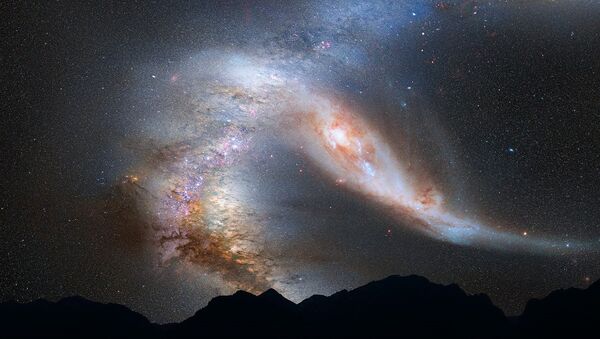A group of astronomers has managed to calculate a more precise timing for the expected collision between our Milky Way galaxy and Andromeda — our closest galactic neighbour. Previously, scientists believed that it was bound to happen in 3.9 billion years, but the authors of the research, which was published in the Astrophysical Journal, tracked the movement of stars using the ESA's Gaia telescope and determined that in fact, the great collision will only take place in 4.5 billion years.
READ MORE: Spinning Neutron Star Spotted for the First Time in Andromeda Galaxy
What is more, the authors of the paper predict that it will not be a "head-on" collision, but rather a "sideswipe", meaning it will not be too disruptive and devastating. And because the distance between stars in galaxies is still astronomically huge, our solar system has all the chances to remain untouched by the event.
READ MORE: Galaxy as 'Old as the Universe' Spotted by Hubble Telescope
However, prior to the collision with Andromeda, the Milky Way has to withstand something similar with the Large Magellanic Cloud (LMC) which is expected to happen in 2.5 billion years. While Andromeda is a bit larger than our galaxy, the LMC only has 1/80 the mass of the Milky Way. Still, the collision with the LMC will affect our galaxy, purportedly increasing the mass of the supermassive black hole at its centre and reshaping the Milky Way into a standard spiral galaxy.

